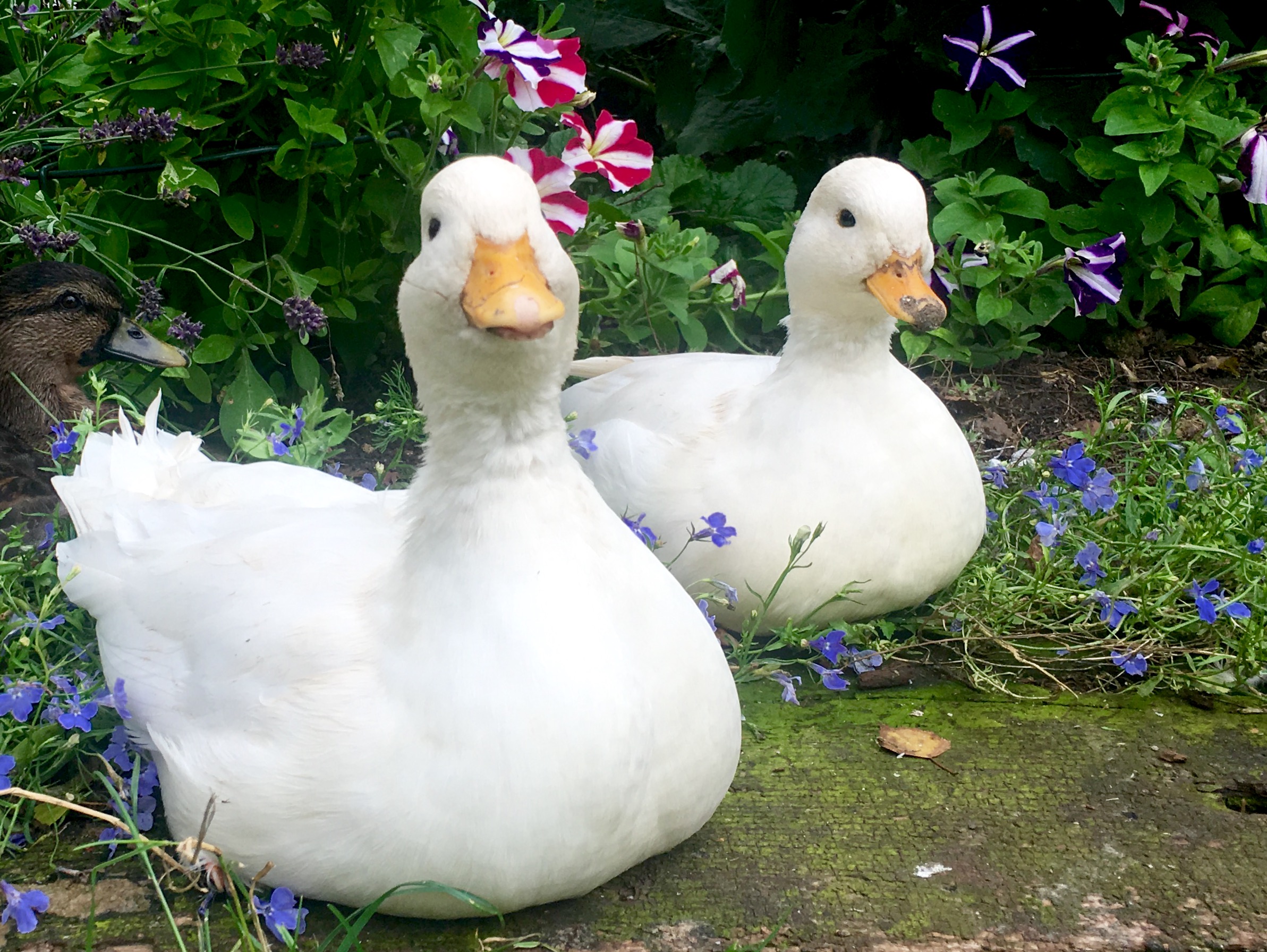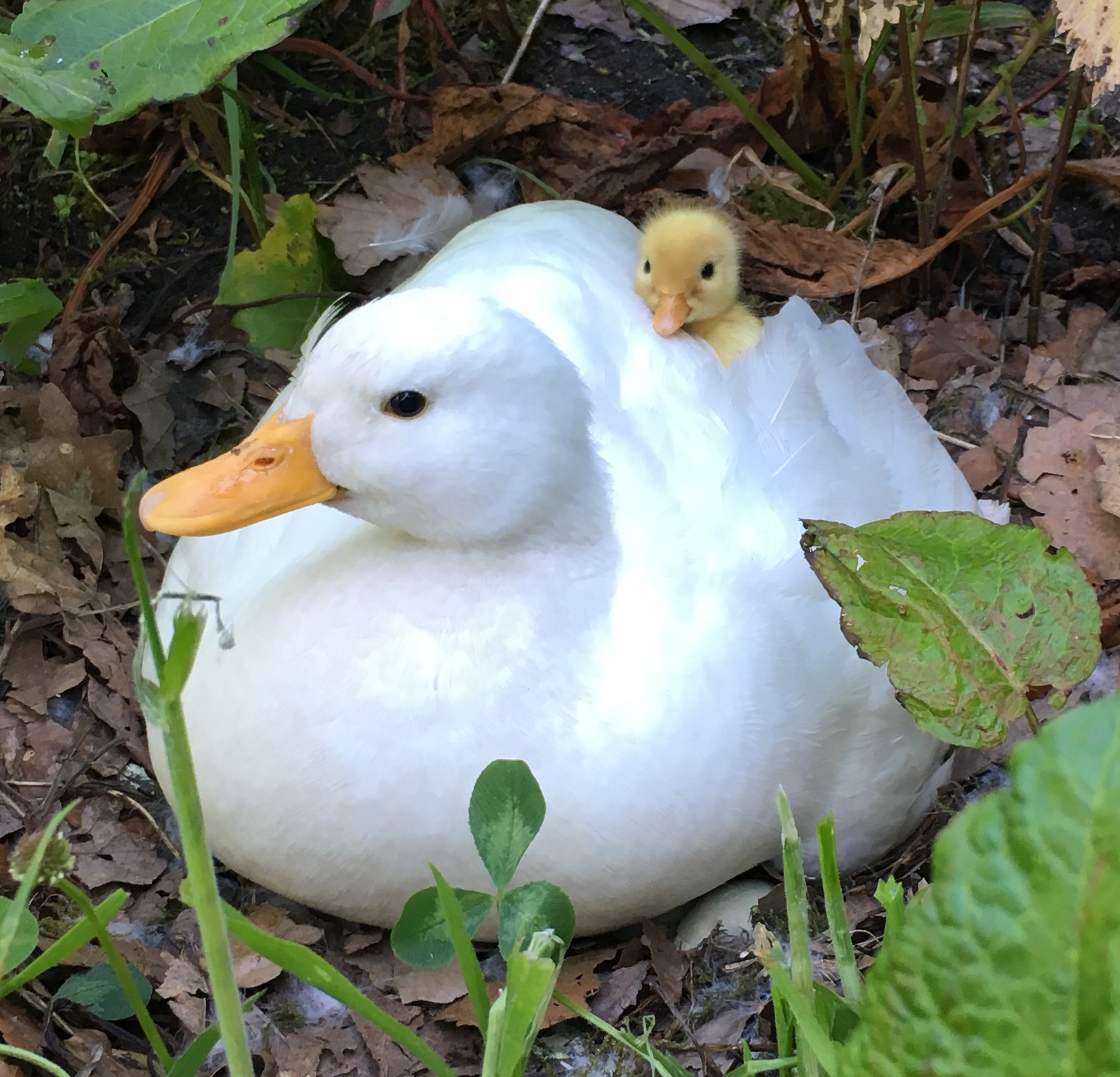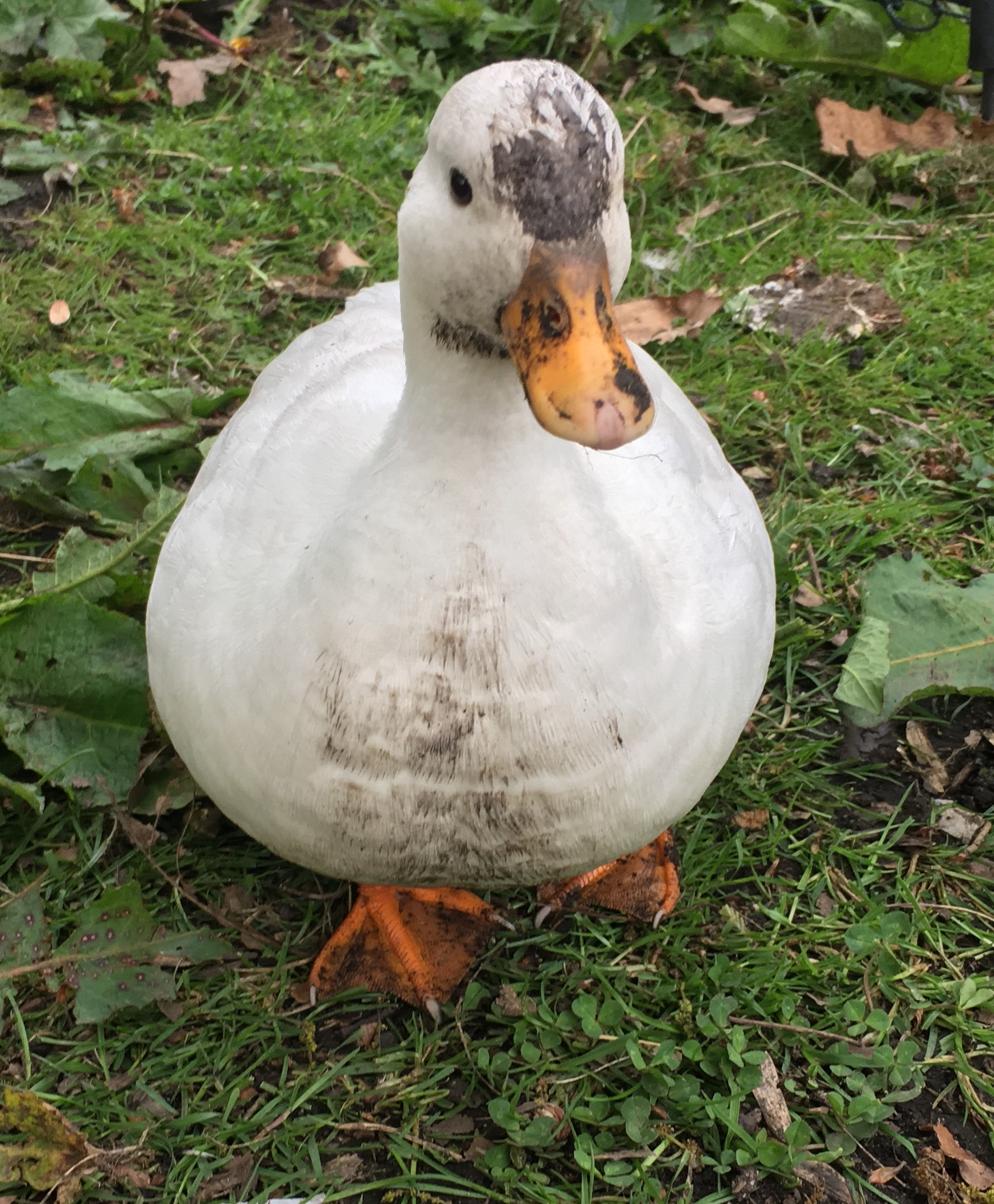Call Ducks - Tiny Charms, Big Personalities
If you've ever found yourself charmed by a small, fluffy creature with an undeniable appeal, then, you know, you might just be thinking about the delightful call duck. These little birds, with their sweet expressions and friendly ways, are, in some respects, truly something special in the world of domestic waterfowl. They have, basically, a long and rather interesting past, going back quite a ways, and have, actually, captured the hearts of many people who enjoy keeping ducks as companions.
These tiny feathered friends are, you know, becoming more and more popular as pets and backyard companions for a whole lot of good reasons. They are, sort of, known for being very gentle and easy to get along with, which makes them a really good choice for families, even those with little ones. You see, their small stature means they do not need a huge amount of room, so, they are, pretty much, an ideal pick for folks who might have just a little bit of outdoor space.
This guide is, you know, here to give you a friendly look at these captivating birds. We will, in a way, explore where they came from, what makes them look so cute, and what their personalities are like. It is, honestly, a chance to get to know these little ducks a bit better and see why so many people are, essentially, drawn to their unique charm and lively spirit.
Table of Contents
- The Curious Past of Call Ducks
- What Makes Call Ducks So Special?
- Are Call Ducks Good Pets for Families?
- Why Do Call Ducks Make Such Unique Sounds?
The Curious Past of Call Ducks
The call duck, as a specific type of small, domesticated water bird, has, essentially, a rather long and interesting story behind it. This particular kind of duck is, basically, considered to be a very old breed, with its beginnings reaching back many, many years into the past. It is, as a matter of fact, widely thought that these ducks first appeared in a place called the Netherlands, a country known for its rich history and beautiful landscapes.
The earliest records we have of these charming little creatures, including written descriptions and even pictures, actually go all the way back to the seventeenth century. So, you know, for hundreds of years, people have been aware of these ducks and their unique qualities. They were, in a way, part of life back then, showing up in art and documents from that time period, which is, honestly, pretty cool when you think about it.
The very first mentions we have that were written down about this breed point directly to the Netherlands as their starting point. Back then, they had a very specific job, which was, basically, to act as a decoy. People, in fact, used them to help with hunting. These ducks were, you know, often referred to as "coy ducks" or "decoy ducks" because of this particular role they played. It was only later on, after some time had passed, that their official name, "the call duck," became the common way to refer to them.
Originally, these small ducks were, as a matter of fact, raised and put to use as live decoys by people who hunted other types of ducks. They were, in essence, a hunter’s tool, a way to attract wild duck breeds closer so they could be caught. It is, pretty much, fascinating to consider how these birds, once serving such a practical and, you know, perhaps a bit surprising purpose, have, since then, really changed their role entirely. They are, today, more about companionship and beauty than about hunting.
The name "call duck" itself, as it happens, comes from a word in the Dutch language. That word is ‘kool,’ which, you know, has a connection to their original purpose. This little bit of history, honestly, just adds another layer to their story, showing how their name is tied to their past uses and where they first came from. It is, in a way, a nice little detail that helps us understand them a bit better.
Where Did Call Ducks Come From, Anyway?
It is, you know, quite interesting to think about the true beginnings of these delightful little ducks. As we were saying, it is widely believed that their story starts in the Netherlands, a place where, as a matter of fact, the earliest pictures and written accounts of them began to appear way back in the seventeenth century. This means, essentially, that for hundreds of years, these particular ducks have been a part of people's lives, adapting and changing over time.
These tiny birds, as it turns out, can actually trace their family tree back to mallards. Mallards are, of course, a very common type of wild duck. So, in a way, the call duck is like a smaller, domesticated cousin of those ducks you often see in parks and ponds. This connection, you know, helps us understand a little bit about their natural instincts and how they might behave.
For a long time, these ducks were, basically, put to work by hunters. They were, in fact, known as "coy ducks" or "decoy ducks" because their job was to lure other wild ducks closer. They had a special way of calling out that would attract their wild relatives, making them, you know, a very useful tool for hunters. It was only later that their current name, "call duck," became the standard way to refer to them, perhaps as their role in human society began to change.
It is, honestly, quite a transformation for a bird that was once, you know, primarily a hunter’s helper. From being a tool used to attract wild birds, the call duck has, since then, really shifted its purpose. Now, they are, essentially, cherished for their looks and their company. This change, you know, speaks volumes about their adaptability and how humans have come to appreciate them for different reasons over the years.
What Makes Call Ducks So Special?
When you look at a call duck, you are, pretty much, looking at one of the smallest domestic ducks you can find. They are, in fact, absolutely tiny when compared to other ducks that people keep. For example, they are, basically, about half the size of other common duck breeds that serve many purposes, like the Khaki Campbell or even the mallard itself. This small size, you know, makes them a really good choice for people who might not have a lot of outdoor space but still want to enjoy having ducks around.
What really makes these ducks stand out, though, is their appearance. They have, in a way, these wonderfully chubby cheeks that give them a very sweet look. Their bills are, honestly, quite short and, you know, give them an adorable facial expression. Then there are their eyes, which are, as a matter of fact, dark and button-like, adding to their overall charm. And, of course, their bodies are, basically, plump and round, making them look like little fluffy balls.
Because of all these features combined, many people would, in fact, argue that call ducks can, you know, solidly make the case for being the world’s cutest duck breed. They just have, essentially, that undeniable charm that draws you in. Their small stature and endearing looks mean they are, pretty much, always a delight to see, whether they are waddling around your yard or just resting quietly.
They are, in some respects, a bantam breed of domestic duck, which simply means they are a miniature version. While they might look similar to some other duck breeds in their general shape or coloring, they are, basically, always much smaller in size. This smaller size is, you know, a hallmark of the breed and contributes a lot to their appeal as pets or for decorative purposes.
This little duck has, honestly, so much cuteness packed into its small body. It is, basically, one of those things that you just have to see to believe, how much personality and charm can come from such a tiny creature. They are, in a way, designed to capture your heart with their looks alone, and then their personalities just seal the deal.
The Adorable Looks of Call Ducks
When you think about what makes a call duck so endearing, it is, honestly, hard to pick just one thing. Their appearance is, basically, a big part of their charm. They have, for instance, these delightful chubby cheeks that make them look incredibly sweet, almost like little cartoon characters. Then there is their bill, which is, you know, notably short and contributes to their overall cute facial structure.
Their eyes are, as a matter of fact, another standout feature. They are dark and round, often described as "button eyes," which gives them a very innocent and appealing expression. And, of course, their bodies are, basically, plump and round, making them look like soft, cuddly little bundles of feathers. All these features together, you know, create a picture of pure adorableness.
These tiny ducks are, in fact, the smallest among all the domestic duck breeds, which is, honestly, a significant part of their appeal. Being so small means they are, essentially, easy to handle and can fit into smaller spaces, making them very popular with hobbyists who might not have a vast area for larger birds. Their small size just adds to their overall charm, making them seem even more delicate and precious.
You can, you know, find these ducks in a whole range of colors and patterns. Places like Metzer Farms, for example, offer a wide variety of call duck breeds and colors. This means that, basically, you can find the perfect one to match your preferences, whether you like classic white, a spotted pattern, or something else entirely. The choice of colors, you know, just adds another layer to their decorative appeal.
Their appearance, with those charming features and tiny stature, really does, as a matter of fact, allow call ducks to firmly establish their reputation as the world’s cutest duck breed. It is, pretty much, a common sentiment among those who know them. They just have, essentially, a natural cuteness that is hard to resist, making them a favorite for both looking at and having around as a companion.
Are Call Ducks Good Pets for Families?
Call ducks are, you know, really well-known for having a very friendly and sociable personality. They are, basically, ducks that enjoy being around people and other animals, which makes them quite appealing as pets. Their gentle and calm nature means they are, in fact, an excellent choice for families, especially those with children. Kids can, you know, often interact with them safely because of their docile temperament.
These little birds are, as a matter of fact, considered one of the sweetest and most easygoing breeds of duck. This makes them, essentially, just perfect for children to be around. They are, you know, quite easy to get used to human presence and can often be tamed without too much trouble. Because of this, they are, pretty much, frequently kept as pets in backyards and homes.
They are, honestly, full of personality, despite their small size. This lively spirit is, you know, one of the main reasons they have become such popular pets and beloved backyard companions. People enjoy watching their antics and interacting with them because they are, essentially, so responsive and engaging. They truly bring a lot of joy to their owners.
The call duck breed is, as a matter of fact, very adaptable. This means they can, basically, adjust well to different living situations, which is another reason they are such good pets. Whether you have a small backyard or a bit more space, they can, you know, usually make themselves at home. Their flexibility makes them a suitable choice for a variety of people looking to add a feathered friend to their lives.
They are, in some respects, raised primarily as pets, which is a big difference from some of their historical uses. This focus on companionship means that their natural friendly tendencies are, you know, often encouraged, leading to very pleasant interactions with their human companions. They are, essentially, just a good option for people who want a pet duck that is relatively easy to manage and very pleasant to have around.
The Sweet Nature of Call Ducks
When you spend time with call ducks, you will, pretty much, quickly notice their incredibly sweet and calm disposition. They are, as a matter of fact, widely regarded as one of the most docile breeds of duck you can find. This makes them, you know, wonderfully suited for environments where they will be around people often, including families with young children.
It is, honestly, their gentle way that truly sets them apart. They are, essentially, not prone to being aggressive or flighty, which makes them very easy to handle and interact with. This calm demeanor means that, you know, even little hands can often safely pet and enjoy these ducks, making them a great introduction to animal care for kids.
They are, in a way, known for being quite easy to tame. With a little bit of regular interaction and gentle handling, call ducks will, basically, often become quite comfortable with humans. This comfort level is, you know, why so many people choose to keep them as pets, as they can form a real connection with their feathered companions.
These tiny ducks are, as a matter of fact, bursting with personality, which is, honestly, a joy to observe. They are not just pretty faces; they have, essentially, their own unique quirks and ways of expressing themselves. This makes them, you know, much more than just decorative birds; they become true members of the family, providing endless entertainment and companionship.
The call duck is, basically, a lively bird, full of charisma, and they are, in fact, primarily raised for their ornamental qualities or for companionship. Their friendly and sociable nature means they are, you know, often seen as ideal backyard buddies. They can, as a matter of fact, adapt to different settings and are, pretty much, a delightful addition to almost any home that has a bit of outdoor space for them.
Why Do Call Ducks Make Such Unique Sounds?
One of the most noticeable things about call ducks, and, you know, something that really sets them apart, is their distinctive "quack." It is, honestly, quite a unique sound in the duck world. Their vocalizations are, as a matter of fact, known for being louder and more frequent than the sounds made by many other types of ducks. This characteristic sound is, essentially, a big part of their identity.
This particular vocal quality is, you know, not just a random trait. It is, in fact, what they were originally bred for. Their loud and

Call Duck | Ducks | Breed Information | Omlet

Call Duck | Ducks | Breed Information | Omlet

Call Duck | Ducks | Breed Information | Omlet